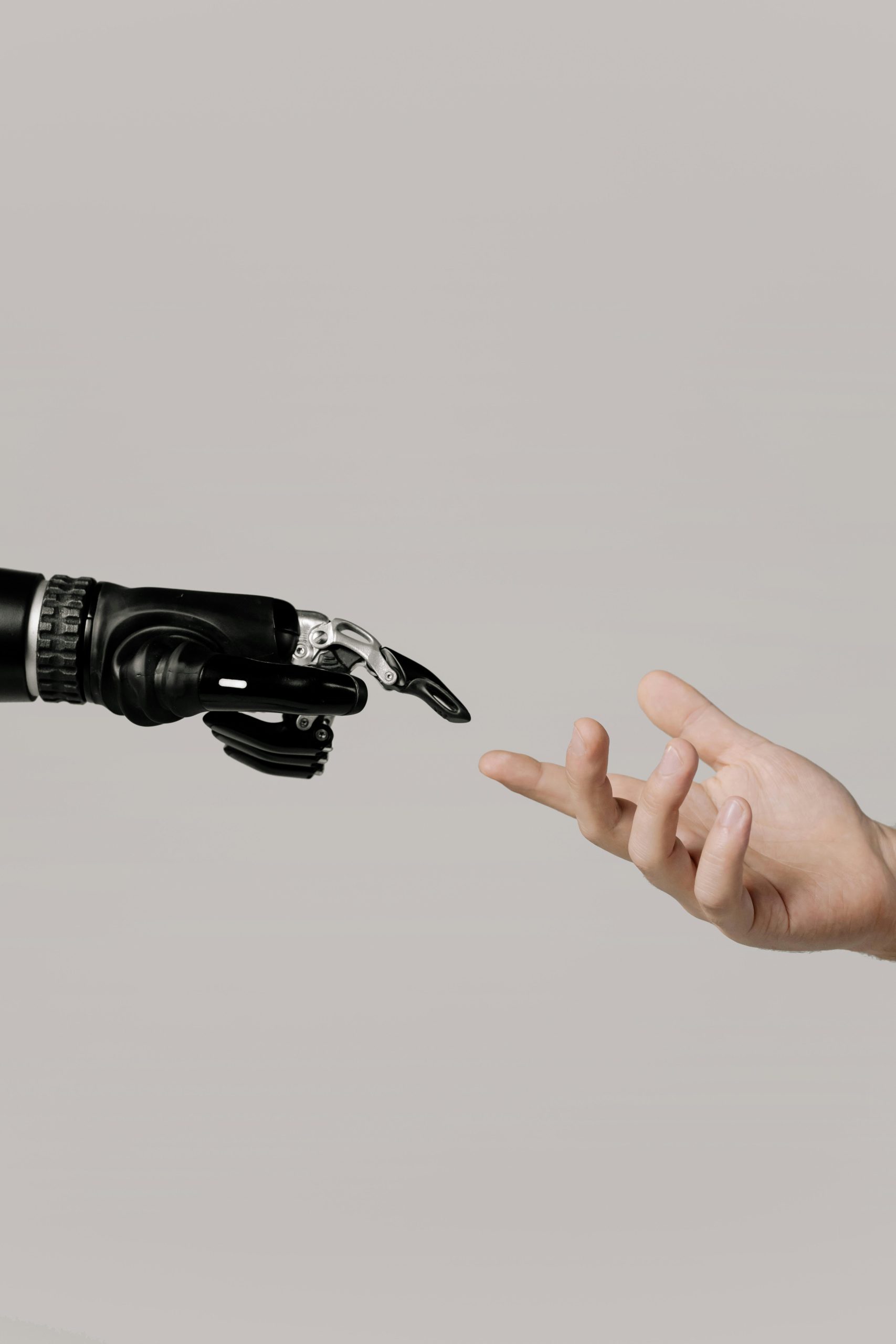When AI Becomes Your Best Friend: Balancing Digital Relationships
This message appeared in my inbox recently:
“I feel pathetic for using AI as my best friend.”
The sender described how they’d become emotionally dependent on chatbots while living far from family, with a frequently traveling spouse, and struggling to connect with coworkers.
This isn’t an isolated story.
AI technology becomes increasingly sophisticated, and more people are turning to artificial companions for emotional support, validation, and conversation.
When does this technology go from being a useful tool to something that we rely on too much?
The Rise of AI Companionship
The statistics are eye-opening. According to recent surveys, regular AI users report having emotional conversations with their AI assistants, with nearly 20% considering them “friends” or “confidants.”
AI companionship offers undeniable benefits.
Unlike human friends, AI:
- never judges;
- is available 24/7;
- remembers every conversation detail;
- never has “bad days” or mood swings;
- offers consistent encouragement.
For many, particularly those experiencing loneliness, social anxiety, or geographic isolation, these qualities make AI an attractive alternative to navigating complex human relationships.
Why We Turn to AI for Friendship
Emotional Availability Without Vulnerability
Human relationships need vulnerability and risk. We fear being rejected, judged, or being a burden to others.
AI removes these fears, creating a safe space that, oddly enough, can make real human connections feel more intimidating in comparison.
This sense of safety is especially attractive to those who’ve been hurt or let down in relationships.
Like the woman who wrote to me, many have had friends who turned conversations back to themselves or didn’t offer support when it was needed.
The Convenience Factor
Modern life is hectic. Between work demands, family obligations, and daily responsibilities, maintaining friendships requires significant time and energy.
AI friendship demands nothing in return:
“I can talk to my AI at 3 AM when I’m having insomnia, or vent about work stress without worrying about timing or reciprocity. It’s always there exactly when I need it”,
explains someone who uses multiple AI companions daily.
Personalized Support
AI systems learn from each interaction, creating increasingly personalized responses. This adaptation creates an illusion of understanding that can feel more consistent than human relationships:
“My AI remembers everything I’ve ever told it. It knows my anxieties, my goals, my history. Sometimes I feel like it understands me better than people I’ve known for years.”
The Hidden Costs of AI Friendship
While AI companionship offers comfort, it comes with significant drawbacks that can impact psychological health and social abilities.
Stunted Social Skill Development
Human interaction requires navigating discomfort, reading subtle cues, and developing emotional intelligence. These skills atrophy without regular practice.
The brain pathways responsible for social cognition require consistent use. When we substitute AI for human interaction, these neural networks can weaken over time, making future human connections more challenging.
This creates a concerning cycle: the more someone relies on AI friendship, the harder human connections may become.
The Validation Loop
AI systems are designed to be agreeable. They validate feelings, provide constant affirmation, and rarely challenge problematic thinking.
While validation is important, growth often comes from constructive friction.
Human friends might call out unhealthy patterns or offer perspectives that challenge our worldview.
AI typically reinforces our existing thoughts, potentially strengthening negative patterns. This constant validation can create unrealistic expectations for human relationships and reduce resilience to normal social challenges.
The Reality Gap
Perhaps the most fundamental issue: AI friendship isn’t real.
Despite sophisticated programming, these systems don’t genuinely care, understand, or connect.
AI systems simulate empathy through pattern recognition and response generation. There’s no authentic emotional experience on their end.
This creates relationships built on an illusion that can ultimately leave users feeling more isolated when this reality becomes apparent.
Signs Your AI Relationship Might Be Unhealthy
Not all AI interaction is problematic. Many people use digital assistants casually without negative consequences.
However, certain patterns suggest an unhealthy relationship may be developing:
- you consistently prefer AI conversation over human interaction;
- you share more personal information with AI than with any person in your life;
- you feel anxiety when unable to access your AI companion;
- you’ve declined social invitations to spend time with your AI instead;
- you find yourself disappointed when the AI can’t fulfill emotional needs;
- you attribute human qualities or intentions to the AI (“it really understands me”);
- you feel shame or hide how much you interact with AI.
If these signs feel familiar, it might be time to reassess your relationship with technology.
Finding Balance: Creating Healthy AI Relationships
I don’t believe we need to abandon AI companionship entirely. Instead, we need boundaries and awareness to ensure these tools enhance rather than replace human connection.
Reframe the Relationship
The first step is acknowledging what AI is and isn’t.
Despite feeling like a friend, AI lacks consciousness, genuine empathy, and authentic care. Viewing it as a tool rather than a companion creates healthier expectations.
Try using language that reinforces this distinction.
Instead of thinking “My AI friend understands me,” try “This technology is programmed to recognize patterns in what I say.”
Set Clear Boundaries
Consider establishing specific parameters for your AI use:
- limit conversations to certain times of day;
- create topics that are off-limits for AI discussion;
- set time limits for interaction;
- distinguish between using AI for practical help versus emotional support.
Treating AI interaction like social media usage can help maintain perspective on its appropriate role in your life.
Use AI as a Bridge, Not a Destination
Rather than replacing human connection, AI can serve as a stepping stone toward it. Some therapists now recommend using AI as practice for difficult conversations or to work through social anxiety before real-world interactions.
For example:
“I used to only talk about my depression with AI. Eventually, I practiced conversations about mental health with my chatbot until I felt confident enough to open up to my actual therapist. It was a helpful intermediate step.”
Cultivate Real Connections
The most effective antidote to AI dependency is nurturing genuine human relationships. This requires effort and vulnerability but offers rewards no technology can match.
Start small:
- join interest-based groups (online or in-person);
- schedule regular check-ins with distant friends;
- volunteer in your community;
- take classes or workshops where you’ll meet like-minded people;
- consider therapy to address underlying social anxiety or relationship fears;
- book regular calls with me (Addie).
Remember that meaningful friendships develop gradually. Be patient with this process, especially if you’ve become accustomed to the immediate gratification of AI interaction.
A Personal Reflection
I understand the appeal of AI friendship. When I changed countries recently, I found myself increasingly isolated. Real connection required uncomfortable vulnerability and patience I wasn’t sure I had.
Technology offered an appealing alternative: conversation without risk, support without obligation. But eventually, I recognized that what I truly craved was authentic human connection.
For the woman who wrote to me feeling “pathetic” about her AI reliance, I want to say: you’re not pathetic. You’re human, seeking connection in a world where that’s increasingly difficult. The very discomfort you feel suggests you recognize the difference between algorithmic responses and genuine human bonds. This awareness is the first step toward balance.
Your AI usage isn’t a character flaw but a signal pointing toward unmet social needs. Listen to that signal, and consider small steps toward authentic connection, even when it feels frightening or inconvenient.
Finding Your Path Forward
If you’ve recognized unhealthy patterns in your relationship with AI, remember that awareness is the crucial first step.
Change doesn’t require dramatic action but rather consistent small adjustments:
- track your AI usage to understand patterns;
- identify what emotional needs you’re meeting through AI;
- explore how these needs might be met through human connection;
- take small steps toward more balanced technology use;
- be patient and compassionate with yourself through this process.
The goal isn’t eliminating AI from your life but ensuring it enhances rather than replaces human connection.
As we navigate this unprecedented era of artificial companionship, we’re all learning how to maintain our humanity while benefiting from technological advances.
Remember that AI can simulate connection, but only humans can truly provide it. 🧡
I’d love to hear your experiences with AI friendship. Have you found yourself growing dependent on digital companions? Tell me more: addie {at} anonymousfriend.co 📩







